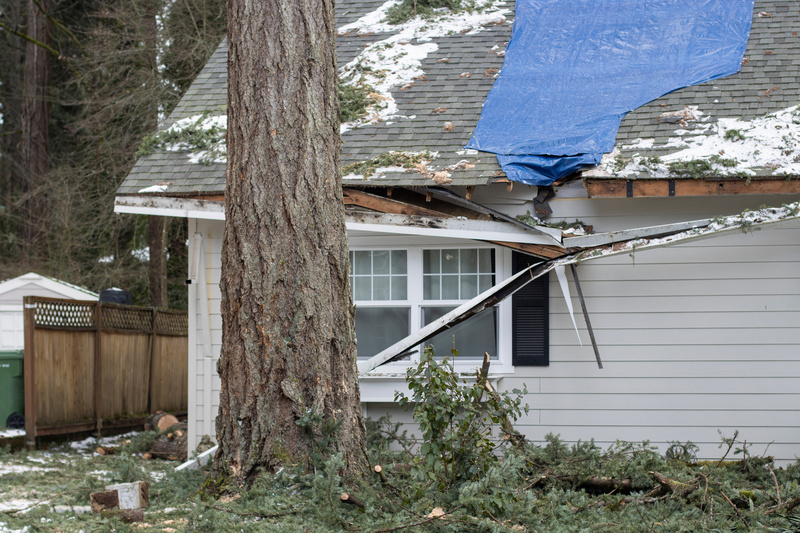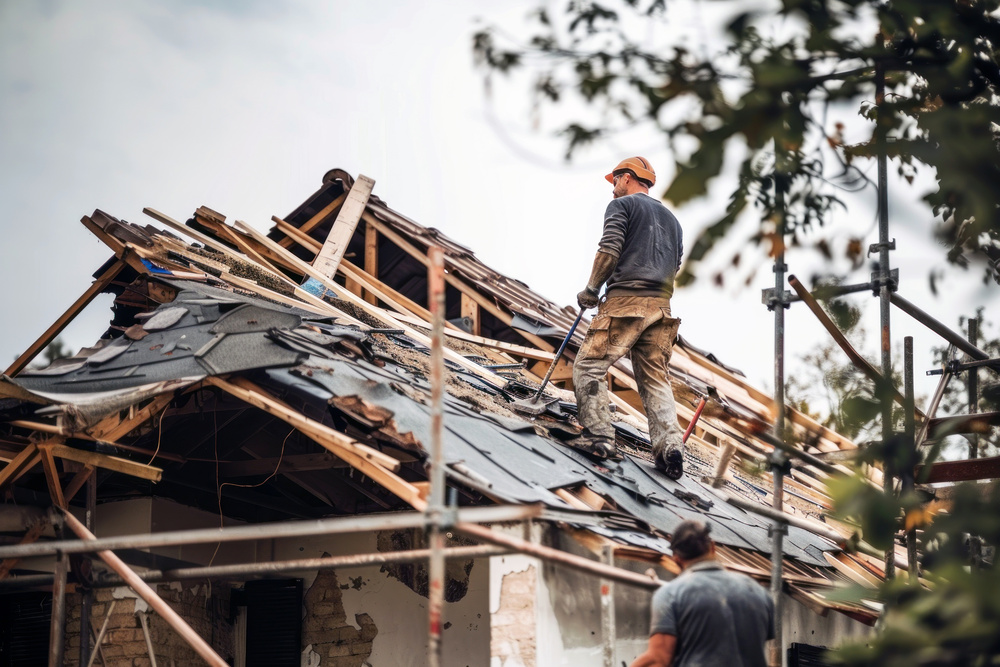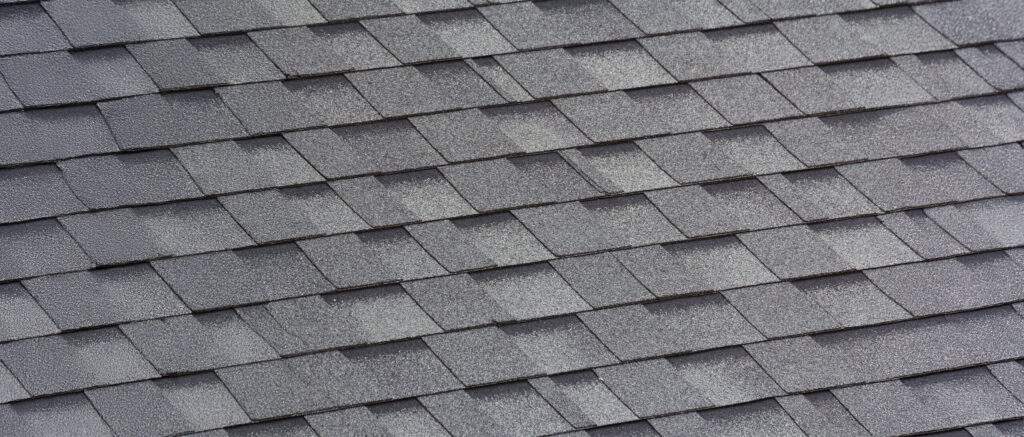Hamilton winters bring more than cold air—they place constant pressure on the roof that protects your home. The freezing temperatures, melting snow, and sharp temperature swings common in Butler County can cause ice dams, roof leaks, and other forms of winter roof damage that often go unnoticed until costly repairs are needed.
Understanding how snow and ice affect your roof — and knowing when to take preventive action — is the key to keeping your home safe and energy efficient all season long. Below, our local experts explain the most common winter freeze roof damages we see across Hamilton, and the steps you can take to protect your home before the next freeze arrives.
Key Takeaways
- Winter weather in Hamilton often leads to roof damage from freezing temperatures, melting snow, and heavy ice buildup.
- Ice dams, clogged gutters, and missing shingles can cause leaks, water stains, and damage inside the home.
- Strong winds, falling branches, and frozen flashing can weaken roofing materials and reduce structural strength over time.
- Regular roof inspections and good insulation help keep Hamilton roofs safe and strong throughout the winter season.
Ice Dams and Roof Edge Freezing
Hamilton’s winter weather often brings freezing temperatures that cause ice dams to form along the roof’s edge. As melting snow refreezes before draining into gutters, these ice buildups can push water beneath asphalt shingles and into attic spaces. This leads to roof damage, water stains, and potentially damaging moisture within your home’s interior walls.
Large ice dams are especially common after a harsh winter storm when warm air from inside the attic causes uneven melting.
Our roofing professionals use specialized equipment to remove snow and ice safely while helping homeowners prevent ice dams through proper insulation and ventilation.
Heavy Snow Buildup and Structural Strain
Heavy snowfall across Hamilton can create serious roof stress during the colder months.
When heavy snow buildup lingers on rooftops, it adds significant weight that compromises structural integrity and may cause sagging areas or cracks in decking materials. We’ve inspected roofs throughout Butler County where prolonged exposure to snow and ice led to weakened surfaces that required extensive roof repairs.
A professional inspection after each major winter storm ensures your roofing system remains in top shape and ready to protect your home from further damage.
Clogged Gutters and Ice Formation
Clogged gutters are another major cause of winter roof damage in Hamilton.
When gutters fill with leaves or other debris during fall, melting snow and freezing rain can’t drain properly. This leads to ice accumulation that pulls gutters away from eaves and causes damaged gutters or water to leak into the home.
Installing gutter guards before the winter season begins keeps water flowing freely, preventing ice dams and reducing the risk of costly repairs once subfreezing conditions set in.
Damaged or Missing Shingles from High Winds
Strong winds during winter storms often loosen or tear away shingles, especially when older roofing materials have already been exposed to multiple freeze-thaw cycles. Missing shingles allow melting snow to seep under the surface and create leaks that lead to water damage in ceilings and attic areas.
As a GAF Master Elite roofing contractor serving Hamilton and surrounding communities, we frequently repair and replace damaged shingles after storms with durable asphalt shingles designed to withstand Ohio’s fluctuating winter temperatures and strong winds.
Frozen Flashing and Chimney Leaks
Flashing around chimneys and vents is highly susceptible to freezing and expansion. When cold weather alternates with brief warm spells, metal flashing contracts and expands, creating gaps that allow leaks to develop around these critical areas.
Over time, this can lead to moisture intrusion, mold, or mildew in your attic.
Our roofing professionals often inspect chimney flashing for cracks or corrosion during winter-long maintenance visits to ensure water cannot lead to structural or surface damage.
Falling Tree Limbs and Storm Debris
Falling branches are a common hazard during winter storms in Hamilton, particularly in tree-heavy areas like Rossville and Lindenwald. Tree limbs weighed down by heavy snow or ice can snap and strike roofs, breaking shingles and puncturing the underlying roofing material. Other debris, like twigs or ice chunks, can collect near gutters and eaves, blocking drainage and causing buildup.
Homeowners can protect their roofs by trimming trees near power lines and scheduling professional help for safe debris removal. Preventive care also reduces the likelihood of leaks, cracks, or other weather-related damage that could lead to costly repairs later.
How to Protect Your Roof Before and After the Winter Freeze
Preparing your roof for Hamilton’s winter weather begins well before the first snowfall. Here are the most effective steps our local experts recommend to secure your roof before and after the winter freeze:
Schedule a Professional Roof Inspection
Before the first major freeze, schedule a comprehensive roof inspection to identify weaknesses such as damaged shingles, sagging areas, or improper insulation. Hamilton’s fluctuating temperatures can cause several problems if these issues aren’t addressed early.
A certified roofing contractor can inspect your attic, insulation, and roof’s surface for signs of moisture or leaks, ensuring your home is ready to face a harsh winter without unexpected repairs.
Clear Snow and Ice Safely Using Proper Equipment
When snow and ice start accumulating, it’s essential to clear them safely with proper equipment. A roof rake lets homeowners remove snow from the ground without damaging shingles.
For steep or multi-level roofs, it’s best to rely on a roofing professional who can manage snow removal safely, especially after heavy snowfall or freezing rain. Clearing snow early prevents large ice dams and maintains the roof’s structural integrity all winter long.
Maintain Attic Insulation and Ventilation
Proper insulation in the attic space helps regulate temperatures and prevents warm air from escaping into the roof’s surface. When warm air rises and meets the cold roof deck, it causes melting snow that can refreeze at the eaves, forming ice dams.
Balanced attic ventilation keeps moisture low and temperatures consistent, which helps protect roofing materials from warping and prolongs roof life throughout the winter season.
Keep Gutters and Downspouts Clear
Clean gutters play a vital role in protecting your roof during freezing weather.
Gutters clogged with debris or ice can cause water to back up and freeze, leading to damaged gutters, leaks, and even interior water damage.
Installing gutter guards and regularly clearing out debris before winter ensures water from melting snow flows properly. This preventive step protects your home and limits the chance of moisture damage inside walls and ceilings.
Trim Trees and Remove Overhanging Limbs
Before winter storms arrive, trim any tree limbs that hang over your roof or near power lines.
Falling branches and ice buildup are among the most common causes of winter roof damage in Hamilton. Removing these hazards early helps prevent impact damage and keeps other debris from collecting on your roof’s surface.
It’s a small step that can save you from costly roof repairs during the colder months.
Check for Water Stains or Leaks After Thaws
After each thaw or rain event, inspect ceilings, walls, and attic areas for signs of leaks, mildew, or mold growth. Water stains on the ceiling or damp insulation may indicate that ice dams or flashing leaks are allowing moisture to penetrate.
Our roofing experts recommend contacting a professional help team immediately if you see any signs of moisture. Early action limits water damage, prevents more extensive repairs, and ensures your home remains well-protected through the remainder of winter.
Ensure Your Roof Is Ready Before the Next Freeze
Don’t wait for ice or snow to cause leaks, sagging areas, or damaged shingles.
At Craftsmen Roofing by Allstar, we specialize in helping you protect your home from freezing temperatures and heavy snow. Our experienced team works with your insurance company when necessary to ensure all necessary repairs are completed properly, helping you safeguard your home through every storm the winter season brings.
Contact us today to schedule your roof inspection or winter protection service in Hamilton, OH.
Frequently Asked Questions
What should I do if I notice damaged shingles after heavy snowfall?
Damaged shingles after heavy snowfall can let moisture reach the roof deck. Schedule a professional inspection for immediate attention to prevent leaks and protect your home from long-term structural damage.
Can asphalt shingles withstand Hamilton’s harsh winter conditions?
High-quality asphalt shingles are designed to resist freezing temperatures, strong winds, and heavy snow. Regular maintenance and seasonal inspections ensure lasting protection through Hamilton’s harsh winter weather.
How can I prevent ice dams from forming during winter?
An ice dam forms when warm attic air melts snow that refreezes near the eaves. To prevent ice dams, ensure your attic has proper insulation and ventilation before freezing temperatures arrive.
What are the early signs of winter roof damage I should watch for?
Early warning signs include ceiling stains, attic moisture, and small leaks that appear after a storm. Request professional help for immediate attention to stop further damage and keep your roof in top shape.




